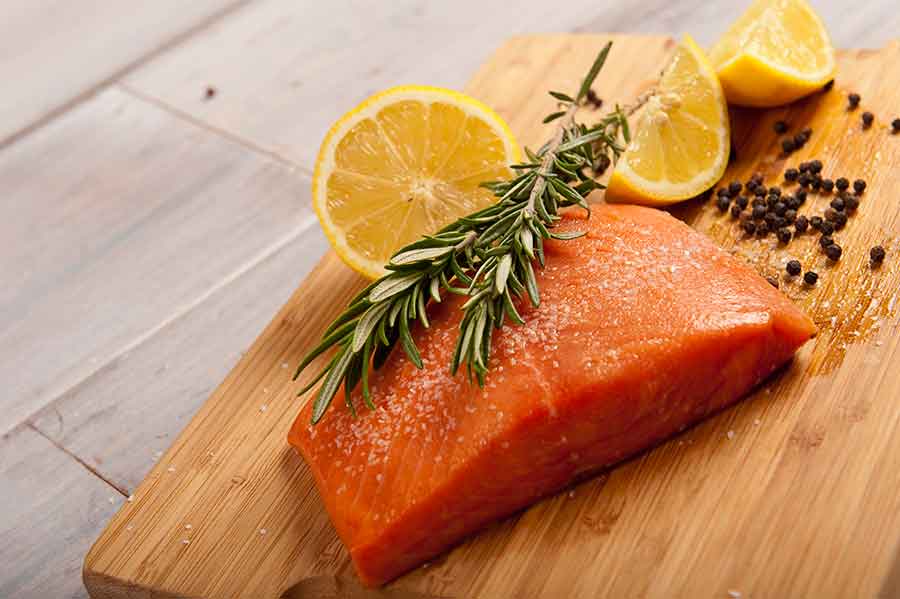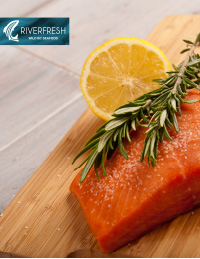Rebuilding the fisheries of Canada’s original inhabitants
By Rajitha Sivakumaran
Thousands of years ago, the Secwepemc people, occupying a vast territory in what is now British Columbia, ran an industrious fishery that contributed to diverse subsistence patterns and promoted cultural growth, trade and enhanced relations with neighbouring tribes.
Today, the Secwepemc are in the process of rebuilding this culture and the formation of a number of associations and initiatives have paved the way to realize this goal. Formed in 1980, the Shuswap Nation Tribal Council (SNTC) of Kamloops, B.C. is one such organization. Its priorities revolve around the concerns of the nine member First Nations communities, including Aboriginal title and rights, self-government and economic development.
“Aboriginal business is one of the fastest growing sectors in the business community,” said Murray Ross, the director of the SNTC’s fisheries department known as the Secwepemc Fisheries Commission (SFC).
Ross entered the field as a fisheries biologist and has worked at the SNTC for almost 25 years. Now he has assumed an administrative and management role, which includes overseeing Aboriginal fisheries business development. One particular initiative is RiverFresh Wild BC Seafood.
“Both our economy around fishing and our First Nations culture are being rebuilt through this project,” Ross stated.
In his line of work, Ross is frequently in contact with the chiefs and elders of the Secwepemc Nation and they often remind him of the long history of fishing by the original inhabitants of B.C.
“Our commercial fishery is not a brand new fishery — we’re basically rebuilding the economy around the fishery that existed here 100 to 150 years ago,” continued Ross.
As part of a government program that helps First Nation groups develop commercial fishing enterprises, RiverFresh began as a research project, with the goal of demonstrating the viability of commercially harvesting salmon in the interior British Columbia.
“It’s not a stand-alone company just yet,” Ross clarified.
Rather, RiverFresh is an affiliated department of the Shuswap Nation Tribal Council Society as defined by the Provincial Societies Act. Having acquired the first commercial salmon fishing licence in this part of the province, RiverFresh offers a mouth-watering array of smoked and candied salmon, fillets, steaks, burgers and sausages. Extensive partnerships with other First Nations and non-Native businesses in the fishing industry have allowed for a diversification into other seafood products as well.
“We have quite a long line of products and we’re expanding all the time,” Ross said.
The success of this enterprise was recognized last year at the BC Aboriginal Business Awards, which showcases Aboriginal entrepreneurship. The Joint Venture Business of the Year award was presented by the B.C. Minister of Aboriginal Relations and Reconciliation, a moment of cultural pride for the entire Shuswap Nation.
The pillars of good fishing: Sustainability, consumer health and traceability
RiverFresh’s seafood is particularly appealing to both the public and other businesses like restaurants due to its commitment to sustainability. RiverFresh products are Ocean Wise recommended, which is a certification program demonstrating that fish are harvested in a sustainable manner.
“We’re targeting only healthy fish populations, we’re not taking too many, we’re catching the fish that we’re aiming for,” Ross explained.
RiverFresh fishers pay particular attention to limiting what in fishery terms is referred to as by-catch. This term refers to fish that are caught alongside targeted fish and oftentimes, the by-catch is comprised of endangered or threatened species.
In the B.C. Interior, Coho salmon is a species at risk. Consequently, RiverFresh has designed their fisheries to minimize Coho by-catch. In order to meet demands, RiverFresh supplements its inventory with ocean-caught Coho salmon that are not at risk, ensuring happy customers and preserving a strong aquatic ecosystem.
RiverFresh also responds to consumer concerns with its ‘no-no policy’ towards selling farmed salmon, due to the numerous health and ethical issues associated with these fish. “We only offer wild-caught seafood products for sale,” said Ross.
All salmon are obtained by RiverFresh staff from local sources. As the company is committed to traceability, educating customers about the origins of the salmon they are consuming is imperative. From a business perspective, it is highly advantageous to stay close to the Kamloops home base — fishing locally is cost-effective, cuts transportation costs and entails minimal involvement from various brokers and middlemen. All in all, local supply creates both self-sufficiency and closer ties with the community for RiverFresh.
Proud to be Native
“We’re quite a proud Aboriginal company … we’re trying to incorporate a stronger cultural aspect into our packaging and marketing,” Ross said.
At first, the Aboriginal clientele was rather small due to the Native mentality “that if I just apply myself, I can go catch my own salmon,” Ross said. Over the years, however, due to poor fishing trends, the percentage of Native customers coming into the RiverFresh store has increased due to the convenience of buying packaged, boneless fish.
Offering nourishing food is not the only way RiverFresh contributes to the First Nations community; it is a hub for employment opportunities too. Most of RiverFresh’s staff identify themselves with the Shuswap Nation. Such a hiring strategy provides the cultural authenticity needed to showcase the company’s Aboriginal origins.
“When you’re at the farmers’ market and you’re buying a Native product, but there’s a non-Native selling it to you, you’re going to get a bit suspicious, aren’t you?” joked Ross.
Ross discussed the importance of “putting a Native stamp on the business”, particularly when it comes to welcoming tourists. In his experience, tourists have shown a tendency to express great interest in the Aboriginal culture in their search for an authentic Canadian experience.
Challenges of the industry: Unpredictable salmon and smart solutions
Running a fishery is no easy task with the unpredictability of salmon availability being the biggest challenge of the industry. Recent years have been particularly dismal.
In a good year, RiverFresh runs a large-scale fishing operation to meet demands and maintain entrepreneurial success. In 2014, staff caught over 175,000 sockeye in only three weeks in Kamloops Lake. According to Ross, sockeye commands the top dollar in the marketplace. Due to its local availability, harvesting sockeye is particularly advantageous for RiverFresh. Once every four years, sockeye numbers can be very high and RiverFresh can build a dependable business around them. In the other three years, sockeye numbers can dwindle so badly that commercial fisheries need to be closed down.
“Like any business, you need to have a secure inventory to sell and in some years, it’s not so secure,” admitted Ross.
Its ability to combat shortages is the primary reason behind RiverFresh’s success as a brand. Even in a bad year, the company manages to sell high quality seafood due to preservation techniques like freezing and vacuum-packing the product. This preserves freshness, increases shelf life up to two years and ensures all-year availability for their consumers.
The future: Diversifying beyond the store
At present, RiverFresh is not only managing a retail business, but is also involved in distribution to regional grocery stores and restaurants. To accommodate these various aspects of business, the company is expanding their warehouse space.
“The future may hold an eastward expansion to Alberta and beyond. There are even prospects of international growth,” said an excited Ross.
Despite the renovations the store is currently undergoing, Ross said, “I don’t think that’s where the fastest growth of the business is going to be. We’re finding now that selling to high-end chefs in our local restaurants has been lucrative for us. Involvement with independent grocery chains has also been profitable — this is an area that calls for expansion”. By having the store serve as an anchor point and base of operations, Ross projects the future of the company will lie in expanding the distribution network.
For more information on RiverFresh Wild BC Seafood, visit www.riverfresh.ca.







